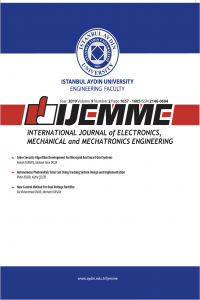A Comparative Study on Maximum Shear Strain Distribution in a Layered Viscoelastic Medium
A Comparative Study on Maximum Shear Strain Distribution in a Layered Viscoelastic Medium
Abstract - For practical calculations, the ovaling and racking deformations on buried structures are estimated by estimating the
Keywords:
Shear strain, underground structures, ovaling racking, free field,
___
- [ 1] Akkar, S. and Bommer, J. (2007). Empirical Prediction Equations for Peak Ground Velocity Derived from Strong- Motion Records from Europe and the Middle East, Bulletin of the Seismological Society of America, Vol. 97, No. 2, pp. 511–530. [ 2] Borcherdt, RD. (1994). Estimates of Site-Dependent Response Spectra for Design (Methodology and Justification). Earthquake Spectra, Vol.10, No.4, pp. 617-653. [ 3] Boore, D.M., Gibbs, F. and Rodriguez, M. (2003). A compendium of P- and S-wave velocities from surface-toborehole logging; summary and reanalysis of previously published data and analysis of unpublished data. Open- File Report 2003-191, USGS, California, United States of America. [ 4] Chen, CH. and Hou, PC. (1992). Response Spectrum of Ground Shear Strain. 10th World Conference on Earthquake Engineering, Rotterdam. [ 5] Daphne, Strong Ground Motion Database of Turkey. (15 May 2014). http://daphne.deprem.gov.tr/2K/ daphne_v4.php. [ 6] ICC, International Code Council. (2009). International Building Code, the United States. [ 7] EduPro Civil Systems. (1998). PROSHAKE – Ground Response Analysis Program, EduPro Civil Systems Inc., Redmond, Washington. [ 8] Gerolymos, N. and Gazetas G. (2005). Constitutive Model for 1-D Cyclic Soil Behavior Applied to Seismic Analysis. Soils and Foundations, Vol. 45, No.3, pp. 147-159. [ 9] Hashash, YMA, Hook, JJ, Schmidt, B and Yao JIC. (2001). Seismic Design and Analysis of Underground Structures. Tunneling and Underground Space Technology, Vol.16, No.4, pp.247–293. [ 10] Imai T, Tonouchi K. and Kanemori T. (1981). The Simple Evaluation Method of Shear Stress Generated by Earthquakes in Soil Ground. Bureau of Practical Geological Investigation: Japan, pp. 39-58. [ 11] Newmark, NM. (1968). Problems in Wave Propagation in Soil and Rock. Symposium on Wave Propagation and Dynamic Properties of Earth Materials, August 23-25, Univ. of New Mexico Press, Albuquerque, NM, pp. 7-26. [ 12] Nigbor, R.L. and Swift J.N. (2001). Resolution of Site Response Issues from the Northridge Earthquake, ROSRINE/ USC-01, Revision 0.9, 26 November. [ 13] PEER Strong Ground Motion Database. (15 May 2014). http://peer.berkeley.edu/smcat/. [ 14] Schnabel, PB, Lysmer, J. and Seed, HB. (1972). SHAKE: A Computer Program for Earthquake Response Analysis of Horizontally Layered Sites. Report No. UCB/EERC-72/12, Earthquake Engineering Research Center, University of California, Berkeley, pp. 1-92. [ 15] Silva, W. (1988). Soil Response to Earthquake Ground Motion, EPRI NP-5747 Final Report, Woodward- Clyde Consultants, California. [ 16] St. John, CM. and Zahrah, TF. (1987). Aseismic Design of Underground Structures. Tunneling and Underground Space Technology, Vol. 2, No. 2, pp. 165 -197. [ 17] Vucetic, M. and Dobry, R. (1991). Effect of Soil Plasticity on Cyclic Response. Journal of Geotechnical Engineering, Vol.117, No.1, pp. 89-107. [ 18] Wang, JN. (1993). Seismic Design of Tunnels, a Simple State-of-the-Art Design Approach. Parsons Brinckerhoff Inc. Publication, New York, pp. 53-133.
- ISSN: 2146-0604
- Başlangıç: 2011
- Yayıncı: İstanbul Aydın Üniversitesi
